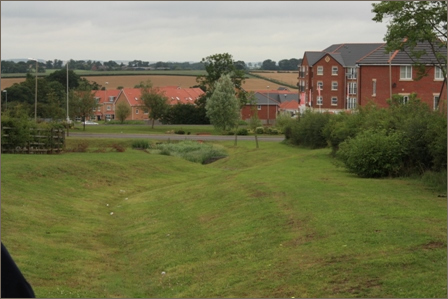- Delivering SuDS
- Using SuDS
- Background
- SuDS principles
- Benefits of SuDS
- Benefits of SuDS
- Why developers should choose SuDS
- Flood risk management
- Water quality management
- Biodiversity & ecology
- Amenity
- Air quality
- Building temperature
- Carbon reduction and sequestration
- Crime
- Economic growth
- Enabling development
- Flexible infrastructure/climate change adaptation
- Education
- Groundwater recharge
- Health and well being
- Pumping wastewater
- Rainwater harvesting
- Recreation
- Tourism
- Traffic calming
- Treating wastewater
- SuDS components
- SuDS components overview
- Source control
- Swales & conveyance channels
- Filtration
- Infiltration
- Retention & detention
- Wetlands
- Inlets, outlets and control structures
- SuDS performance & monitoring
- Delivery
- The costs & benefits of SuDS
- Adoption & maintenance of SuDS
- Legislation & regulation
- Design guidance
- Retrofitting SuDS
- Drainage exceedance
- Home
- Delivering SuDS
- Using SuDS
- Background
- Urban drainage
Urban drainage
Built-up areas need to be drained to remove surface water runoff. Traditionally this has been achieved by using gullies and underground pipe systems designed to convey the water away as quickly as possible. The alteration of natural flow patterns can lead to problems elsewhere in the catchment.

Water quality issues have become increasingly important, due to pollutants from urban areas being washed into rivers or the groundwater. Once polluted, groundwater is extremely difficult to clean up. Traditional drainage systems cannot easily control poor runoff quality and may contribute to the problem.
The amenity aspects of drainage such as water resources management, community facilities, landscaping potential and provision of varied wildlife habitats have largely been ignored by traditional urban drainage. This is why we should embrace Sustainable Drainage Systems (SuDS) to deliver a more holistic approach to managing surface water and where ever possible mimic natural drainage.
Urban drainage is a very old profession, dating back to around 3000 BC. Over recent decades, the international urban drainage literature has seen the development and adoption of a range of ‘new’ terms (and jargon) that attempt to describe the management of urban water and surface water runoff in a more holistic manner.
Terms such as Low Impact Design (USA), Sustainable Drainage Systems (SuDS) (England and Wales), Sustainable Urban Drainage Systems (SUDS) (Scotland),Water Sensitive Urban Design (WSUD) (Australia), Best Management Practices (BMPs) (USA), Stormwater Control Measures (SCMs) (USA) Green (stormwater) Infrastrcuture (USA) have experienced rapid growth. There are slight nuances in how the terms are used within the countries of origin, however there is a common outcome of a better way to manage surface water.
Read more about



